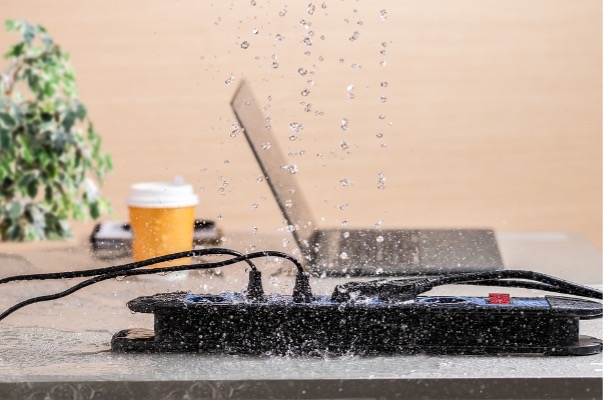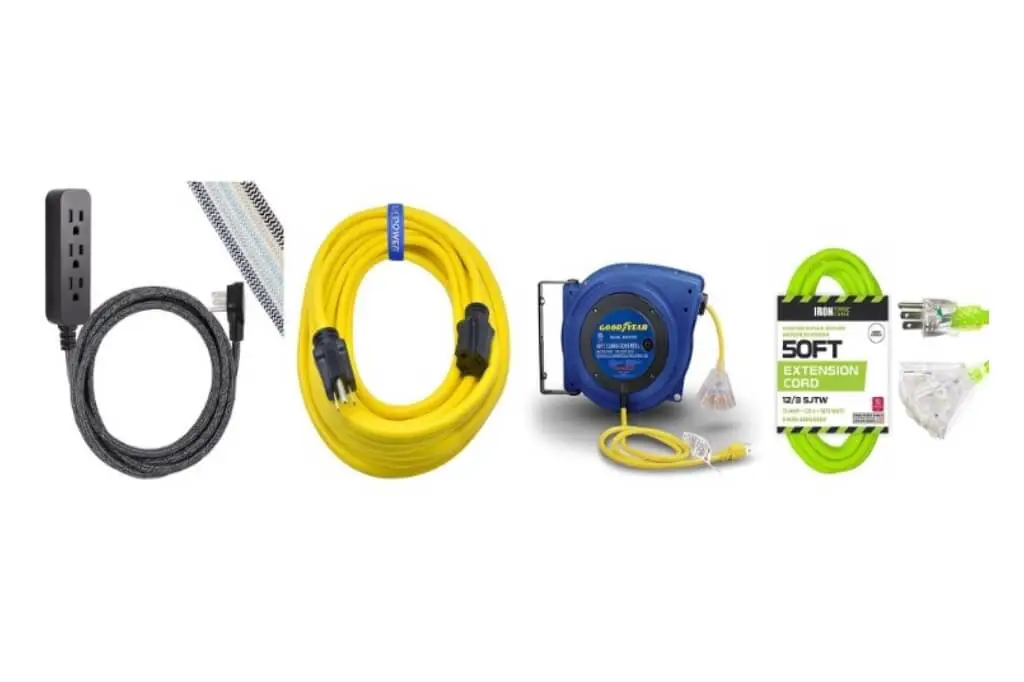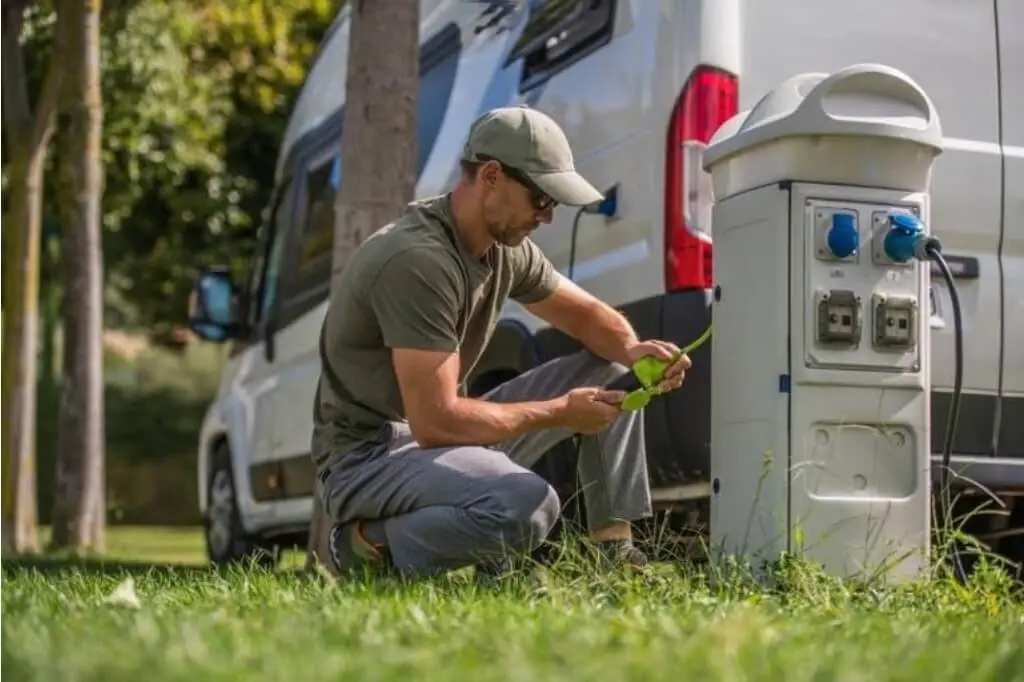Extension cords play a vital role when it comes to outdoor activities like hosting events, yard work, or adding a touch of festive charm to your home. These long power cords enable us to connect our electrical devices to distant power sources. However, when the rain clouds gather, our extension cords become vulnerable to water damage, posing serious safety hazards. This guide’ll explore the risks associated with wet extension cords and provide practical tips and solutions for protecting your outdoor extension cord from rain.
The Risks of Wet Outdoor Extension Cord
Before we delve into protective measures, it’s essential to understand the risks associated with using wet extension cords. When an extension cord is exposed to rain or moisture, several dangers can arise:
1. Electrical Shock
Water and electricity don’t mix well. When a wet extension cord comes into contact with water, it becomes a conductor of electricity. Anyone who touches a wet cord or stands on a wet surface near it is at risk of receiving a painful and potentially dangerous electrical shock.
2. Short Circuits and Fires
Moisture can penetrate the cord’s insulation and reach the electrical conductors inside. This can lead to short circuits and even fires, which can damage your property or cause injuries.
3. Cord Damage
Wet cords can quickly deteriorate, leading to frayed or damaged wires. This not only reduces the lifespan of your extension cord but also makes it unreliable and unsafe to use.
Now that we understand the potential risks let’s explore various methods and products to keep your extension cords dry and safe.
Protecting Your Extension Cord from Rain: Solutions and Tips
1. Use a Weatherproof Extension Cords
When you know you’ll frequently be using extension cords outdoors, investing in weatherproof extension cords is a smart choice. These cords are designed with weather-resistant materials and have features like reinforced insulation and sealed plugs.
When purchasing a weatherproof extension cord, look for the following features:
- Water-resistant plugs: Ensure the plug ends of the cord are equipped with rubber or plastic covers to keep out moisture.
- Heavy-duty insulation: Choose cords with thick, durable insulation that provides extra protection against the elements.
- UV resistance: UV-resistant cords are ideal for long-term outdoor use as they won’t deteriorate under the sun’s rays.
While weatherproof extension cords may be more expensive than standard ones, they offer long-lasting protection and are well worth the investment. There’s no better combination of all of these protective features than our brilliantly designed Weatherproof Extension Cord.
2. Use a Waterproof Extension Cord Cover
One of the most effective ways to protect your outdoor extension cord from rain is by using a waterproof extension cord cover. These covers are designed to encase your entire cord connection, shielding it from the elements. Here’s how to use them:
Step 1: Choose a waterproof extension cord cover that matches the size of your cord and plug.
Step 2: Place the cover over the extension cord connection, ensuring it’s completely sealed.
Step 3: Secure the cover in place using the provided locking mechanism or a zip tie.
Waterproof extension cord covers are readily available at hardware stores and online retailers, making them a convenient and affordable solution for rainy conditions.
3. Elevate Your Extension Cord
Another effective way to protect your extension cord from rain is to keep it elevated above the ground. Here’s how to do it:
Step 1: Identify suitable anchor points, such as tree branches, fences, or outdoor hooks, to elevate your cord.
Step 2: Use cord hooks or clips to secure the cord at both ends, ensuring it stays above the ground.
Step 3: Create a gentle slope in the cord to allow rainwater to run off rather than pooling in low spots.
Elevating your extension cord not only keeps it dry but also prevents it from lying in puddles or becoming entangled in wet grass.
4. Employ a DIY Rain Shelter
If you’re looking for a cost-effective solution, consider creating a DIY rain shelter for your extension cord. Here’s how to make one:
Step 1: Gather materials such as PVC pipes, plastic sheets, and duct tape.
Step 2: Create a frame using the PVC pipes and secure it firmly in the ground or to a nearby structure.
Step 3: Drape the plastic sheet over the frame, leaving enough space for your extension cord to pass through.
Step 4: Seal the edges of the plastic sheet with duct tape to prevent rain from seeping in.
This DIY rain shelter will provide excellent protection for your extension cord during wet weather conditions.
5. Seal Cord Connections
If you’re using multiple extension cords connected together, it’s crucial to seal these connections to prevent water from infiltrating. Here’s how to do it:
Step 1: Purchase a pack of outdoor-rated electrical tape or self-sealing silicone tape.
Step 2: Before connecting the extension cords, wrap the male end (prongs) with the tape, ensuring it forms a tight seal.
Step 3: After connecting the cords, wrap the entire connection with the tape, extending it a few inches on each side.
This simple yet effective method will keep your cord connections dry and secure.
6. Minimize Cord Exposure
One of the easiest ways to protect your extension cord from rain is to minimize its exposure to water in the first place. Here are some tips to achieve that:
- Position the cord overhead: Whenever possible, run your extension cord along fences, walls, or elevated surfaces to keep it away from ground-level moisture.
- Use cord clips: Secure your cord in place with cord clips or holders to prevent it from dragging on wet surfaces.
- Avoid low spots: If you must lay your cord on the ground temporarily, ensure it doesn’t run through low spots or areas prone to flooding.
By being mindful of how and where you route your extension cord, you can significantly reduce the risk of water damage.
Conclusion
Outdoor extension cord are versatile tools that make our outdoor activities more convenient. However, they can become safety hazards when exposed to rain or moisture. To protect your extension cord from rain, consider using waterproof cord covers, elevating the cord, creating DIY rain shelters, investing in weatherproof extension cords, sealing cord connections, and minimizing cord exposure.
By following these practical tips and solutions, you can ensure the safety of your outdoor electrical connections, prolong the lifespan of your extension cords, and enjoy worry-free outdoor activities even when the rain comes pouring down. Remember, safety always comes first, so take your time when it comes to electrical equipment in wet conditions.


